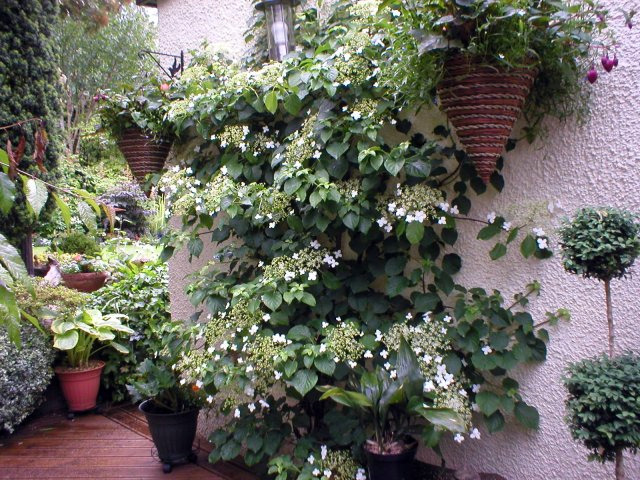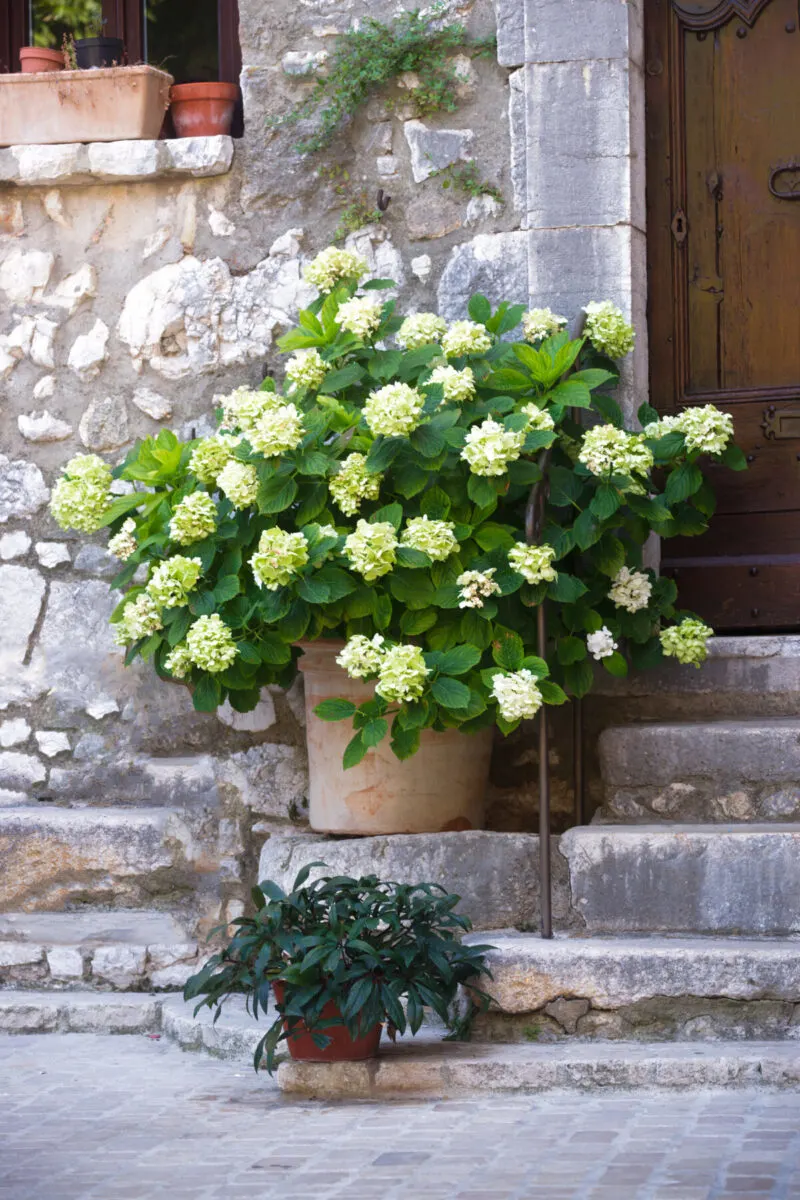How To Grow A Climbing Hydrangea In A Pot
Climbing hydrangeas (Hydrangea anomala subsp. petiolaris) are beautiful, vining plants that can add a touch of elegance to any garden. They are relatively easy to care for and can be grown in pots, making them a great option for small spaces or balconies.
In this blog post, we will discuss everything you need to know about growing climbing hydrangeas in pots. We will cover topics such as choosing the right pot, potting mix, and location, as well as watering, fertilizing, and pruning.
Choosing the Right Pot
The first step to growing a climbing hydrangea in a pot is choosing the right pot. The pot should be large enough to accommodate the plant's mature size. A good rule of thumb is to choose a pot that is at least twice as wide as the plant's root ball.
The pot should also have drainage holes to prevent the roots from sitting in water. If your pot does not have drainage holes, you can drill some yourself.
The material of the pot is also important. Terracotta pots are porous, which allows the soil to dry out more quickly. This can be helpful in hot, dry climates. However, terracotta pots can also dry out too quickly in cold climates.
Plastic pots are less porous, which means they will retain moisture for longer. This can be helpful in cold climates, but it is important to make sure that the pot has drainage holes so that the roots do not sit in water.
Potting Mix
The potting mix you use is also important. Climbing hydrangeas prefer a rich, well-draining potting mix. You can buy a potting mix specifically designed for hydrangeas, or you can make your own by mixing together equal parts potting soil, compost, and perlite.
Location
Climbing hydrangeas prefer partial shade. Too much sun can scorch their leaves, while too much shade can prevent them from blooming. A spot that receives morning sun and afternoon shade is ideal.
Watering
Climbing hydrangeas need regular watering. The soil should be kept moist, but not soggy. Water your plant deeply once a week, or more often if the weather is hot and dry.
Fertilizing
Climbing hydrangeas should be fertilized once a month during the growing season. Use a balanced fertilizer, such as a 10-10-10 fertilizer.
Pruning
Climbing hydrangeas do not need to be pruned heavily. However, you may want to remove any dead, diseased, or damaged branches. You can also prune the plant to control its size and shape.
With proper care, climbing hydrangeas can thrive in pots for many years. They are a beautiful and versatile plant that can add a touch of elegance to any garden.
Climbing hydrangeas are beautiful and versatile plants that can add a touch of elegance to any garden. If you're short on space, you can also grow them in pots. But did you know that there are a few things you need to do to keep your climbing hydrangea happy and healthy in a pot?
For starters, you'll need to choose a pot that's large enough for the plant to grow in. A good rule of thumb is to get a pot that's at least twice as wide as the root ball of the plant. You'll also need to make sure the pot has drainage holes to prevent the roots from rotting.
The next thing you'll need is a potting mix that's specifically designed for hydrangeas. This type of potting mix will have the right balance of nutrients and moisture to keep your plant healthy.
Once you've chosen the right pot and potting mix, it's time to plant your climbing hydrangea. Be sure to plant it at the same depth it was planted in its original pot.
After planting, water your climbing hydrangea well. You'll need to water it regularly, especially during the first few weeks after planting. Once the plant is established, you can water it less often.
Climbing hydrangeas also need fertilizer to thrive. You can fertilize them once a month during the spring and summer months. Use a fertilizer that's specifically designed for hydrangeas.
With a little care and attention, you can enjoy your climbing hydrangea for many years to come. For more information about growing climbing hydrangeas in pots, please visit .
FAQ of climbing hydrangea in pots
- What size pot do I need for a climbing hydrangea?
Climbing hydrangeas can grow quite large, so you will need a pot that is at least 18 inches in diameter and 12 inches deep. If you live in a warm climate, you may need a larger pot. The pot should also have drainage holes to prevent the roots from sitting in water.
- What type of soil do I need for a climbing hydrangea?
Climbing hydrangeas prefer a well-draining soil that is rich in organic matter. You can use a commercial potting mix that is designed for hydrangeas, or you can make your own by mixing equal parts potting soil, compost, and perlite.
- How much water does a climbing hydrangea need?
Climbing hydrangeas need regular watering, especially during the summer months. Water your plant deeply once a week, or more often if the weather is hot and dry. Be sure to check the soil moisture level before watering, and avoid overwatering, as this can cause root rot.
- How much fertilizer does a climbing hydrangea need?
Climbing hydrangeas need to be fertilized regularly to produce their best flowers. You can fertilize your plant with a balanced fertilizer once a month during the growing season. In the fall, you can give your plant a fertilizer that is high in phosphorus to help it prepare for winter.
- How do I protect a climbing hydrangea from the cold?
If you live in a cold climate, you will need to protect your climbing hydrangea from the cold winter weather. You can do this by wrapping the pot in burlap or bubble wrap, or by moving the pot to a sheltered location. You may also need to cover the plant with a tarp or frost cloth.
Image of climbing hydrangea in pots
Here are 5 images of climbing hydrangea in pots from Pinterest:
- A climbing hydrangea plant in a hanging pot, with its cascading vines covered in white flowers.

- A climbing hydrangea plant in a terracotta pot, growing up a trellis. The plant has large, dark green leaves and clusters of pink flowers.

- A climbing hydrangea plant in a large pot, growing up a fence. The plant has lush, green foliage and large, white flowers.
- A climbing hydrangea plant in a pot on a patio, with its vines cascading over the side of the pot. The plant has pink flowers and dark green leaves.

- A climbing hydrangea plant in a pot on a windowsill, with its vines reaching up to the window. The plant has white flowers and dark green leaves.


Post a Comment for "How To Grow A Climbing Hydrangea In A Pot"